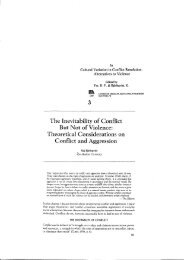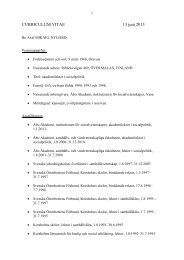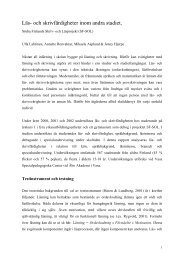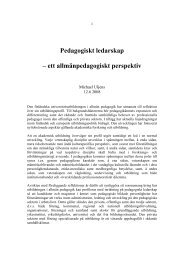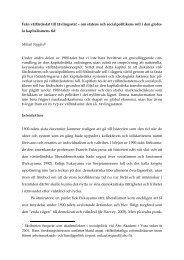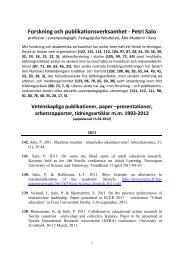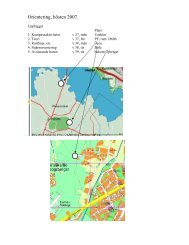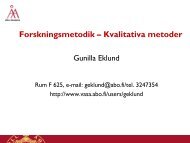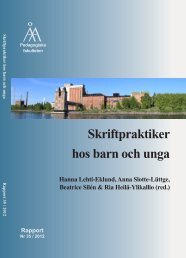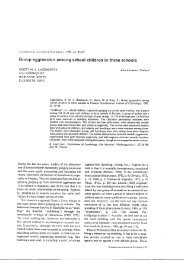Parties, Candidates and Citizens On-Line - Åbo Akademi
Parties, Candidates and Citizens On-Line - Åbo Akademi
Parties, Candidates and Citizens On-Line - Åbo Akademi
You also want an ePaper? Increase the reach of your titles
YUMPU automatically turns print PDFs into web optimized ePapers that Google loves.
Introduction<br />
Two specific theories have usually been discussed regarding the on-line activity by<br />
political parties <strong>and</strong> its potential future impact on electoral competition (cf. Margolis &<br />
Resnick 2000: 14-21). The Internet, it has been argued, could serve to equalize the<br />
electoral playing field. The medium has several distinct features compared to traditional<br />
media. It is low cost, interactive <strong>and</strong> provides speed <strong>and</strong> ease of multimedia transmission.<br />
Campaign messages conveyed on the Internet also lack editorial intervention (Bimber &<br />
Davis 2003; Kamarck 1999: 114). Smaller <strong>and</strong> fringe parties could st<strong>and</strong> a better chance of<br />
keeping pace with the major parties on the Internet than in traditional political outlets <strong>and</strong><br />
thus also potentially reach a larger audience via the net (e.g. Margolis et al. 2003: 58). This<br />
line of thought is often referred to as the equalization theory. The second theory<br />
concerning the impact of on-line campaigning on electoral competition perceives a ‘nochange’<br />
scenario. According to this theoretical view, politics on the internet is merely an<br />
extension of off-line politics <strong>and</strong> will fail to alter established power structures (Margolis &<br />
Resnick 2000: 2; Norris 2003: 23). This would partly be due to the major parties’ higher<br />
off-line visibility, which provides them with more opportunities for guiding voters to their<br />
sites. Moreover, even though Internet campaigning is more affordable than TVadvertising,<br />
the costs of skilful web designers are steadily rising (Margolis et al. 1997,<br />
2003; Margolis & Resnick 2000: 53-74). Smaller parties without large campaign resources<br />
would still be disadvantaged on-line. This theory is usually called the normalization theory.<br />
Several studies relating to party competition on-line have been conducted (e.g.<br />
Gibson et al. 2003; Gibson & Ward 2002; Greer & LaPointe 2003; Kamarck 2002; Norris<br />
2003; Margolis et al. 1997, 2003; Margolis & Resnick 2000). These studies provide<br />
empirical evidence pointing in both directions regarding the theories. Many studies of US<br />
web campaigns support the ‘no-change’ situation (Norris 2003: 42). The results<br />
concerning campaigns in other countries are more inconsistent (e.g. Cunha et al. 2003;<br />
Gibson & Römmele 2003; Newell 2001). However, there have been few attempts to<br />
systematically explore the conditions in which the findings of either normalization or<br />
equalization have occurred. Some researchers note that party web campaigning seems<br />
independent from national <strong>and</strong> institutional context (e.g. Gibson et al. 2003: 66-7). Others<br />
argue that country specific conditions <strong>and</strong> institutional settings seem to influence party<br />
web campaigning (e.g. Cunha et al. 2003: 70-4; March 2003: 20; Gibson & Ward 2002:<br />
104).<br />
This uncertainty in the scholarly literature provides an interesting research<br />
problem. Are there any systematic differences in the country settings in which the parties<br />
36



